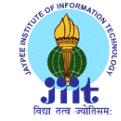|
 |
 |
|
Shashi Shekhar , Professor,
McKnight Distinguished University Professor
Department of Computer Science
College of Science and Engineering
University of Minnesota
|
 |
| Shashi Shekhar is a
Mcknight Distinguished University Professor at the University
of Minnesota (Computer Science faculty). For contributions
to geographic information systems (GIS), spatial databases,
and spatial data mining, he received the IEEE-CS Technical
Achievement Award and was elected an IEEE Fellow as well as
an AAAS Fellow. He was also named a key difference-maker for
the field of GIS by the most popular GIS textbook . He has
a distinguished academic record that includes 300+ refereed
papers, a popular textbook on Spatial Databases (Prentice
Hall, 2003) and an authoritative Encyclopedia of GIS (Springer,
2008). Shashi is serving as a member of the Computing Community
Consortium Council (2012-15), a co-Editor-in-Chief of Geo-Informatica
: An International Journal on Advances in Computer Sciences
for GIS (Springer), and a series editor for the Springer-Briefs
on GIS. Earlier, he served on multiple National Academies'
committees including Geo-targeted Disaster Alerts and Warning
(2013). Future Workforce for Geospatial Intelligence (2011),
Mapping Sciences (2004-2009) and Priorities for GEOINT Research
(2004-2005). He also served as a general or program co-chair
for the Intl. Conference on Geographic Information Science
(2012), the Intl. Symposium on Spatial and Temporal Databases
(2011) and ACM Intl. Conf. on Geographic Information Systems
(1996). He also served on the Board of Directors of University
Consortium on GIS (2003-4), as well as the editorial boards
of IEEE Transactions on Knowledge and Data Eng. and IEEE-CS
Computer Sc. & Eng. Practice Board.
In early 1990s, Shashi's
research developed core technologies behind in-vehicle navigation
devices as well as web-based routing services, which revolutionized
outdoor navigation in urban environment in the last decade.
His recent research results played a critical role in evacuation
route planning for homeland security and received multiple
recognitions including the CTS Partnership Award for significant
impact on transportation. He pioneered the research area of
spatial data mining via pattern families (e.g. collocation,
mixed-drove co-occurrence, cascade), keynote speeches, survey
papers and workshop organization. Shashi received a Ph.D.
degree in Computer Science from the University of California
(Berkeley, CA).
|
|
Title: From
GPS and Google Maps to Spatial Computing
Abstract:
From virtual globes (e.g., Google Maps) to global positioning
system, spatial computing has transformed society via pervasive
services (e.g., Uber and other location-based services), ubiquitous
systems (e.g., geographical information system, spatial database
management system), and pioneering scientific methods (e.g.,
spatial statistics). These accomplishment are just the tip
of the iceberg and there is a strong potential for a compelling
array of new breakthroughs such as spatial big data, localization
indoors and underground, time-travel (and depth) in virtual
globes, persistent monitoring of environmental hazards, accurate
spatio-temporal predictive models, etc. For example, a McKinsey
report projected an annual $600B saving from leveraging spatial
big data (e.g., smart-phone trajectories) for novel eco-routing
services to reduce wasted fuel, greenhouse gas emission and
pollution exposure during unnecessary waits at traffic lights
and in congestion.
However, many fundamental research questions need to be investigated
to realize the transformative potential. For example, how
can spatial big data (e.g., smart-phone trajectories) be mined
without violating privacy ? How can spatial statistical and
machine learning algorithms be generalized to model geographic
concepts (e.g., context, hot-spots, hot-features, doughnut-hole
patterns), address spatio-temporal challenges (e.g., auto-correlation,
non-stationarity, heterogeneity, multi-scale) and scale up
to spatial big data ? How can eco-routing address the new
challenges, e.g., waits at traffic-signals violate the sub-path
optimality assumption in popular A* and Dijktra's algorithms?
.
http://www-users.cs.umn.edu/~shekhar/
|
|